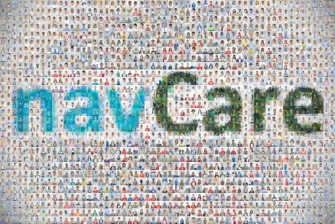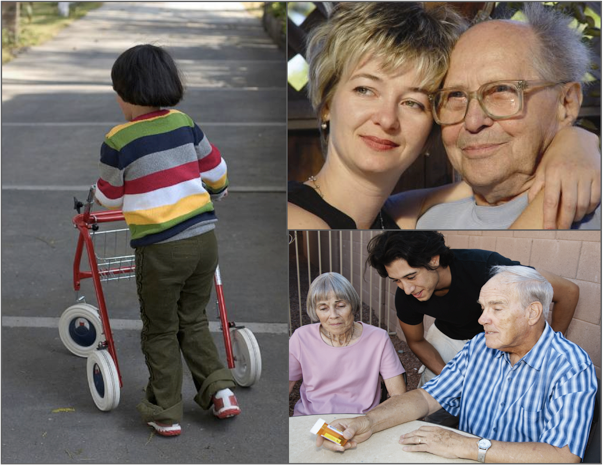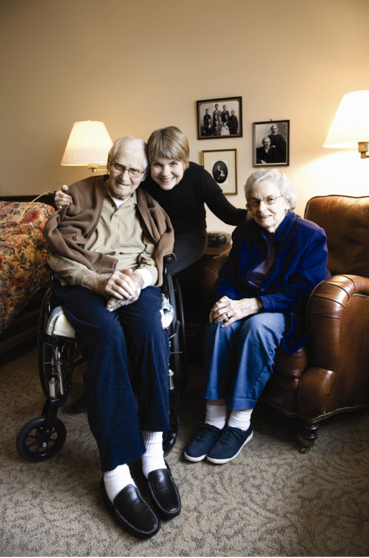navCare Position Paper



[If you would like a PDF file copy of this Position Paper,
email harry@legacies.ca]

for Patients, their Families, Professionals and Volunteers
Our motto:
Some people get it. Everyone can
is not a rallying cry, but a thoughtful, reasoned approach
to enhancing care for all Canadians.
navCare
Resources for navigating today’s healthcare system.
----------------------------------------
100 Roads to Health Care
for Patients, their Families, Professionals and Volunteers
Prepared September 13, 2008, revised October 2009 by navCare and these contributors:
•Michèle Chaban, MSW, RSW, DPhil, PhD Supervisor, U of Wales, Post-Graduate Supervisor, University of Toronto, Faculties of Social Work, Family and Community Medicine and Center for Bio-ethics
•Father William Cruse, B.A., ABD Economics, M.Div., Anglican priest
•Peter Dill, Executive Director of the Durham Association of Family Respite Services and also representing Deohaeko Support Network and the Durham Family Network
•Don Fenn, Canadian Council for Aging at Home, Family Caregiver Newsmagazine
•Louise Leblanc, Volunteer Coordinator: ALS Society of Ontario and Parkinson’s Society of Northern and Central Ontario; Volunteer representing, Alliance Hospice
•Pat Malone, B.Sc.N, Saint Elizabeth Health Care Foundation, Integrity Officer
•Belinda Marchese, Director, Clinical Services, Hospice Toronto
•Alex Schadenberg, London Compassionate Community Care
•Harry van Bommel, M.Ad.Ed., CTDP, Executive Director of Legacies Inc., Author, Educator, Patient-Family Advocate
•Janice Waugh, MA, Communications Consultant, Volunteer Doula, Patient Advocate
navCare
The authors of this paper are a consensus-based, inter-professional and community representative group. “100 Roads” refers to our belief that there are many roads to excellent health and home care and our goal is to help patients and families find the ones best suited for their specific situation.
For further information contact:
Harry van Bommel
navCare
11 Miniot Circle, Toronto, ON M1K 2K1 CANADA
416.264.4665 harry@legacies.ca
© 2008, 2009 Chaban, Michèle; van Bommel, Harry; Waugh, Janice et al.
ALL RIGHTS RESERVED. No part of this publication may be reproduced, stored in a retrieval system, or transmitted, in any form or by any means, electronic, mechanical, photocopying, recording or otherwise, without the prior written permission of the publisher, Legacies Inc.
----------------------------------------
Table of Contents
Executive Summary5
Working together to help people get excellent care.5
The benefits5
navCare goals6
Deliverables6
2-Year Pilot Project6
Rationale6
We assert7
Executive Summary Conclusion8
Re-Imagining Health care9
Health Care Needs to Change9
Historical Overview: The Development of the Health Care Systems in Canada10
Re-Frame and Re-Focus Health Care10
Who Gets the Best Care11
Characteristics of People Who Get the Best Care12
What These Valued People Receive in the Way of Health Care12
Key Decision Point13
Value-Based Framework for Family Care13
Shifting the Focus from the Individual to the Family13
Navigating and Negotiating Our Care14
A Better Experience for Everyone14
The Future15
The benefits of our work16
navCare goals16
Deliverables16
2-Year Pilot Project16
Conclusion17
Appendix: Health Care Advisor18
----------------------------------------
Executive Summary
Have you ever been overwhelmed trying to get the health care you need for yourself or someone you love? Has navigating the health care system ever seemed overly complicated and exhausting?
The goal of NavCare is for everyone to get the support they need, whether from an individual or information resources, to navigate the healthcare systems and to negotiate the best health care possible.
Working together to help people get excellent care.
Canadians like to believe that they have equal access to health care and health-promotion services. In reality, people receive different levels of care due to the individual’s knowledge of the system, communication skills, expectations, assertiveness, position in society and other variables as outlined in Health Canada’s Social Determinants of Health Care. [Visit http://www.resultsnotintentions.com for hundreds of peer reviewed articles describing the barriers to effective health care for many people depending on their age, gender, abilities, language, education, economics, location, and more, accessed September 13, 2009; and Public Health Agency of Canada and Health Canada accessed September 13, 2009.]
navCare is a multi-disciplinary project of health and home care organizations and community service groups. We know first-hand that patients, family and friends are often overwhelmed, stressed and frustrated as they try to navigate the healthcare system. We want to help.
navCare will provide resources under the Creative Commons License [Creative Commons Attribution License allows others to remix, tweak, and build upon navCare resources and, although their new works must also acknowledge navCare, they don’t have to license their derivative works on the same terms] to help people learn how to find and get excellent health care efficiently. We will follow a knowledge-to-action model whereby we provide the resources to help people to act. Our printed and web-based materials and courses will help organizations support their clients and individuals navigate the health care system more effectively.
The benefits
The benefits of patients more efficiently navigating and negotiating the care they need are:
•Better quality of care for patients and their loved ones.
•Reduced stress on the healthcare system and its professionals.
navCare goals
¥Identify current benchmarks for the excellent care received by many people.
¥Develop, evaluate and revise a collection of learning resources to be used by individuals, families and organizations to obtain the benchmarks of excellent care.
¥Promote and distribute the resources via the Internet to individuals, families and organizations nation-wide and internationally encouraging them to update and modify the documents according to their needs.
¥Pass on the resources and their maintenance to a host organization by December 31, 2014.
Deliverables
navCare will create, test and make freely available resources that help people navigate and negotiate the health care system. Deliverables include:
1.A collection of articles, training manuals, podcasts and similar materials on navigating the health care system.
2.A Content Management System (CMS) for managing the resources and making them easily accessible for individuals and organizations.
3.Website for distribution of resources.
4.Seminars for trainers on navigating the health care system.
5.Evaluation of resources and distribution methods.
2-Year Pilot Project
We propose a pilot project to begin achieving these goals. The pilot project will first develop the web-based resources necessary for individuals and organization to use to better navigate the health care systems and negotiate excellent care. The materials will then be tested within navCare’s member organizations.
After careful revision of our materials, they will be freely available to individuals and organizations to use, customize and adapt for their own purposes. The website will be taken over by a charitable or non-profit organization and maintained and updated by them.
Rationale
Every Canadian patient and his/her family needs to receive measurably excellent health care. The route by which they will receive this care is as individual as the people involved. It is for this reason that we have named this paper “100 Roads to Healthcare.”
Every Canadian must have equal access to health care as well as health promotion services. They need whole person care: excellent physical, emotional, intellectual and spiritual care that includes easy access to information and support. However, hundreds of studies indicate that many do not receive this level of care. Results Not Intentions Accessed September 13, 2009.]
Our health care systems are mainly focused on acute care and curing disease. Patients and families are often lost to a focus on specialized, institutionalized and centralized care. Patients are numbers, staff are overwhelmed by administrative demands and administrators must balance competing interests.
This institutionalized, acute-focused system generally does not support the large number of Canadians who need care and are living in the community with ongoing chronic and continuing care needs. These individuals and their families are often unseen and have great difficulty navigating a ‘system’ which was not designed to meet their increasing needs.
We do not want to fill this paper with statistics. But a few are necessary to give us the scope of the need for better resources and services: [http://www.hrsdc.gc.ca/eng/cs/comm/sd/caregivers.shtml. Accessed September 13, 2009. ]
•It has been estimated that informal caregivers provide more than 80 percent of all the care needed by people with long-term health problems.
•In 2002, 23% of Canadians aged 45–64 provided care to seniors. Of this group, 70% were also employed (General Social Survey, 2002).
•On average, these Canadians provided 23 hours of unpaid caregiving per month (29 hours for women, 16 for men)
•27% of those aged 45–64 with children at home also cared for seniors
•Over 2 million adults (aged 15 and over) with disabilities receive help, mostly from family members, with everyday activities (Participation and Activity Limitation Survey, 2001).
•Of these adults with disabilities:
o63% received help from family members living with them
o42% received help from family members who did not live with them
•Less than a quarter (24%) received help from organizations or agencies—the same percentage as those receiving help from friends and neighbours (help could come from more than one source)
We are suggesting ways to better meet the needs of patients, support and nurture family relationships and enrich a sense of community by combining the skills and strengths of patients, families, professionals, volunteers and community members in a family-community care model.
We assert
•That the excellent care that some people receive everyday at all levels in our health care systems and through each life stage (from conception to death) should serve as the benchmark against which all patient care must be measured.
•That patients and families need the support of a Health care advisor or informational resources to help them navigate the health care systems so that they receive care that meets this measurable benchmark.
Executive Summary Conclusion
By design, every Canadian is supposed to have equal access to health care and health-promotion services. In reality, people receive different levels of care due to the individual’s knowledge of the system, communication skills, expectations, assertiveness, position in society and other variables as outlined in Health Canada’s Social Determinants of Health Care. Our intention is to research and develop ways for people to gain the support they need to overcome the barriers to excellent care. We do not aim to add a new layer to the health care system or develop a new organization for delivery. Rather, we wish to support the education and development of individuals and resources within the current systems and within the broader community.
----------------------------------------
Re-Imagining Health care
Every Canadian patient and his or her family needs to receive measurably excellent health care – excellent physical, emotional, intellectual and spiritual care as well as excellent access to information and support. The route by which they will receive this care is as individual as the people involved. It is for this reason that we have named this paper “100 Roads to Healthcare.”
Likewise, everyone in Canada is responsible, to some degree, for helping patients and families receive such care. We do this because, as a civilized society, we try to heal and enhance the wellbeing of all our members; at least in principle.

In this paper, we will look at where health care is today in Canada and how we got here, some of the problems being faced by patients and their families, and strategies to create effective change.
Health Care Needs to Change
Individuals, families, communities and health care teams are all finding that there is inequity in accessing Canadian health care services. That said, ask most Canadians about their health care systems and they will express pride in the values of equity, access and the quality of health care they believe occurs in hospitals, long-term care facilities, clinics and home care.
However, dig a little deeper and you will find that many patients and their families also feel marginalized, alienated, unwelcomed, frightened, anxious, confused, overwhelmed and isolated. We do not accept such treatment in any other service industry.
Care is often fragmented in the transitions from family doctor to specialist, from diagnosis to treatment, and from one specialty to another. Many patients have more than one condition but our systems of care are not designed to deal with multiple care issues at once.
It is clear that health care needs to become:
¥Patient-based, family-focused and community-centred.
¥Measured on patient and family results/outcomes through qualitative
and quantitative studies, including
opatient narratives, throughout the complete journey of care rather than just on length-of-stay, or bed capacity,
opatient satisfaction tools and staffing ratios.
2.Collaborative so that patients and families may become informed,
educated and supported members of the professional and volunteer team.
On this last point, it must be recognized that patients and their families often experience fear, a sense of being overwhelmed and exhaustion (physical, mental and spiritual). They cannot, therefore, be expected to participate as equal members of a professional and volunteer team yet their participation is important as it helps achieve the best, measurably effective care.
Historical Overview:
The Development of the Health Care Systems in Canada

Traditionally (and, perhaps, a bit idealistically), the family doctor helped patients from the beginning of their disease or condition, possibly to a cure and eventually to their death. The doctor was the central person who ensured that everyone else provided the needed care. Most of this care was provided at home or in the community where people lived.
After World War II the location of care went from home to the local hospital which could be hundreds of miles away from one’s home. Hoping to make health care more effective and efficient it became specialized, centralized and institutionalized. The theory was that people would get seen more quickly, treated more efficiently and discharged faster from the system.
Within a few decades, health institutions specialized further and health care was distributed through programs that were dependent on budgets and the funding of resources. This further centralized care and focused measurement on service costs (i.e., cost of nursing, cost of teams and disciplines, cost for extended length of stay due to infections, cost of equipment and facilities, etc.). As we focused on programmatic funding that sometimes got focused in one or two disciplines, we increasingly drifted away from our purpose of caring for people and lost sight of whole-person care.
Re-Frame and Re-Focus Health Care
People often question whether our health care systems are designed to support the facilities, the staff and the governments funding them rather than the individuals in need and their families. These cannot be viewed as competing interests.
We need to care for each other as patients, family members and health care providers while ensuring that health care systems support the careers, visions and research of health care professionals.
Measurements must first focus on patient care. Outcome measures that look at ‘length of stay’ or ‘cost per procedure’ statistics measure costs, not care. How do we change this? We begin with a real examination and measurement of the patient’s experience throughout their care – from the onset of symptoms, through testing and treatments and their follow-up care at home. This requires a real interest in patient narratives and a willingness to seek out our failures as well as our successes. We can learn from these failures rather than attribute blame. We can replicate excellence through an understanding of our strengths and weaknesses. We need to ask:
How can we help all patients and families get the measurably excellent care that is now available to some?
A patient-based, family-focused and community-centred approach to health care is key.
Who Gets the Best Care
As we move away from disease models of care we are placing more emphasis on life models of health. One such model is Health Canada’s social determinants of health based on work done at the Public Health Agency of Canada. This model emphasizes the interconnected components of health. The social determinants of health are:
2.Social Support Networks
4.Employment/Working Conditions
6.Physical Environments
7.Personal Health Practices and Coping Skills
8.Healthy Child Development
9.Biology and Genetic Endowment
10.Health Services
11.Gender
-
12.Culture
[Public Health Agency of Canada and Health Canada: accessed September 13, 2009]
Those who have the best of these social determinants tend to be the healthiest Canadians with the greatest access to excellent health care from birth to death.
Characteristics of People Who Get the Best Care
We have health care systems that are so complex that responsibility for your care may get passed from one discipline to another or one silo within the system to another. At times there will be no one singularly responsible for your care.
Getting answers to questions or information through the testing, treatment and discharge steps is especially difficult when you are ill or also managing the complexities of work, home and extended family. Yet some people do get what they need. Who are they?
When you ask a group of Canadians who is likely to get the best care in our health care systems, they may mention (see also social determinants of health above):

•Health care insiders
•Clergy
•Media personalities
•Feminist / politicized individuals
•Clear communicators
•Power brokers
•People who:
oCan name drop and have a relation-ship or are volunteers
(e.g., Hospital Board members)
oHave previous experience navigating the health care systems
oAre well known in their own community (e.g. a respected community
elder, a family matriarch in a large extended family)
oAre wealthy and can afford to hire extra help
oAre known to the care providers (e.g., repeat patients, family, friends, neighbours).
With the exception of those with previous experience navigating the system, this is a list of people who through birth, marriage, career choice and money embody that which Canadian society values most highly. Should health care be more accessible and more equitable for those of privilege? In a country of immigrants, how many generations does it take for us to achieve this privilege?
What These Valued People Receive in the Way of Health Care
People with some of the characteristics listed above are more likely to receive better care than other patients. What do we mean by better care?
¥Personalized care (whole person care not disease focused and clinical).
¥A variety of inter-professional care such as physiotherapy, OT, and others.
¥More timely care especially specialty services.
¥An ability to jump the waiting-list queue.
¥Continuity of care.
¥Knowledge of alternatives and getting them.
¥People taking the time to educate them on the system.
¥Coordinated care.
¥Good food. Better Nutrition.
¥The time and choice to make informed decisions.
¥Pain and symptoms managed more effectively.
¥Transportation to and from the hospital, appointments, clinics.
¥Co-ordinated homemaking services (private or through homecare).
¥Longer stays if they wish.
¥Spiritual and psycho-social support.
¥Home number of their physicians.
¥Someone to call for answers to questions.
¥Best equipment – (e.g., a double hospital bed so partners can sleep together).
¥Someone filling out all paperwork for them.
¥Pre-registered into healthcare facilities to avoid waiting in lobby, admissions or Emergency Room.
¥Monitoring – two way video, vital signs through computer so they can stay at home.
¥More volunteer help and social networks of care.
¥Better discharge planning with excellent connections to community services.
Key Decision Point
The excellent care that some people receive everyday in our health care systems should serve as the benchmark against which all care is measured. Rather than pronounce ‘ideal’ standards of care, we can use real-life excellence as the benchmark. We can then identify gaps in excellence to minimize or eliminate less-than- excellent care.
Value-Based Framework for Family Care
Family members are anyone who is significant to the person receiving care. Families come in many forms (i.e., single parents, multiple parents from reconstituted families, biological and adopted children, grandparents raising children of their children, young children providing care to their parents, gender and transgender issues, interracial and intercultural, etc.). Nuclear families may be the exception rather than the rule in many communities. Public policy and perception that remains dedicated to nuclear families fail to support the needs of different types of families. The presumption of large extended families also presumes that family caregivers exist at home to provide care. This is often not accurate. Health care needs to integrate this reality and base care/service on this diversity.
Those family members who commit to supporting the patient also need formal supports. Intimate family members who are not present for geographic or personal reasons are still family members needing support.
Shifting the Focus from the Individual to the Family
To provide better care for individuals, families and communities we need a change in our values, beliefs and practices. Part of this change will take us from individual responsibility to communal responsibility. Just as it ‘takes a village to raise a child’, it will also take a village to help all its members receive the health care and supports they need from conception to death.
The objective is to meet patient and family needs within a healing, compassionate, family-focused health care model that is broad-based enough to incorporate non-health care issues such as the Social Determinants of Health (see page 9).

Learning how to navigate the health care systems involves knowledge of the various systems (e.g., preventive care, acute care, maternity care, home care, chronic care, mental health /mental illness care, hospice care). It involves understanding how the various professionals think and work, what their general attitudes are towards patients and how the systems help or hinder excellent care in specific circumstances. It requires the development of skills to negotiate the quality and quantity of care one receives.
There are population health groups (e.g., peri-natal parenting groups, cancer support groups, caregiver networks) as well as health care givers that have the knowledge and skills to navigate and negotiate excellent care. They are well informed, able and willing to share their abilities with health care consumers. But what if you are a health care consumer who does not know to ask for this help or cannot ask for reasons of ability (i.e., language, culture, physical or mental disability, dying, bereaved or simply exhausted and overwhelmed)? There is no guarantee that health care consumers will find the knowledge and skills they need.
A Better Experience for Everyone
When you are very sick or vulnerable, how do you find the care you need? How do you find the energy to begin the search? How do you ask? If you ask, will you lose your independence? Will you lose your supportive housing unit, your job or your loved ones?
Often health care professionals are asked to take the responsibility to inform, educate, counsel and advocate for individuals and families seeking health care. It is a challenge to ensure that everyone is equally informed and has equal access to services.
The time has come to think differently about how we deliver care so we can better the experience of everyone: patients, families, professionals and volunteers.
There is a need for family-centered resources to mentor, coach and convey the health care information that will benefit those seeking and providing care.
¥The more the average health care consumer is helped to know how to navigate the health care systems and negotiate for the best care available, the more they are able to access health care services themselves.
¥The more families are able to navigate their own health care the less they will challenge the health care system and the less worn the system of care will be.
¥If the family and team share what they know of the person in need of care, the better the care will be for the person.

Concentrating on the experiences of patients and their families throughout their health care journey will lead to measurable results:
¥Improved patient, family and community-centered goals and values
¥Improved population health and patient care
¥Improved communication and competence building with
patients, families and the inter-professional team
¥Improved access to health care
¥Improved recruitment and retention of health care providers
¥Improved patient safety
¥Improved communication among health care providers
¥Improved efficiency and effectiveness of health human resources
¥Improved satisfaction among patients and health care providers
¥Improved health promotion at individual, family and community levels.
There are 2.8 million caregivers in Canada. [Statistics Canada as reported in Canadian Living Magazine’s “Special Issue on Family Care Solutions”, September, 2007, p.11.] There are also hundreds of thousands of professional and volunteer care providers. We will all be touched and affected by a re-imagined health care within the wider context of community life.
There will need to be changes in two main areas of health care:
1.Systemic changes that better use our resources to meet the needs of patients rather than the needs of the ‘systems.’ There is excellent work being done across Canada and internationally that streamlines the systems to better meet patient needs within shorter time frames. We need to incorporate these benchmarks into our own health care systems.
2.Individual changes for patients, families, professionals, volunteers and community members to help them acquire the knowledge and skills they need to better navigate the health care system and negotiate their care.
navCare will concentrate on the second area of change to meet the individual needs of patients, families, professionals and volunteers regardless of the healthcare system they are in.
The benefits of our work
The benefits of patients more efficiently navigating and negotiating the care they need are:
•Better quality of care for patients and their loved ones.
•Reduced stress on the healthcare system and its professionals.

navCare goals
¥Identify current benchmarks for the excellent care received by many people.
¥Develop, evaluate and revise a collection of learning resources to be used by individuals, families and organizations to obtain the benchmarks of excellent care.
¥Promote and distribute the resources via the Internet to individuals, families and organizations nation-wide and internationally encouraging them to update and modify the documents according to their needs.
¥Pass on the resources and their maintenance to a host organization by December 31, 2014.
Deliverables
navCare will create, test and make freely available resources that help people navigate and negotiate the health care system. Deliverables include:
•A collection of articles, training manuals, podcasts and similar materials on navigating the health care system.
•A Content Management System (CMS) for managing the resources and making them easily accessible for individuals and organizations.
•Website for distribution of resources.
•Seminars for trainers on navigating the health care system.
-
•Evaluation of resources and distribution methods.
2-Year Pilot Project
We propose a pilot project to begin achieving these goals. The pilot project will have three integrated parts involving participants from across Canada to:
1.Create a core curriculum of freely adaptable materials for patients, families, professionals, volunteers and planners to help patients navigate the health care systems and negotiate their care through 5 learning methods: (1) self-directed, (2) self-instructional, (3) instructor-led training, (4) coaching and/or (5) using Health care advisors. A major focus of creating such learning materials involves validity research into the needs identified in this paper and measuring the results including:
a.Holding a one-day conference with speakers from hospitals, community agencies, social work, hospices and homecare to gather their input into our pilot project design and implementation. Input into the design would also incorporate online survey(s) and focus group(s), as needed. A similar one-day conference will be held at the end of the two-year project to share, evaluate and discuss the results of the Pilot.
b.Identifying learning methodologies and creating learning materials for each.
c.Creating a web-based and mobile telephone platform from which to distribute our learning materials.
d.Identifying preferred job description criteria and hiring practices for Health care advisors, their training needs and administrative/logistical issues.
2.Use the core curriculum to work with organizations across Canada to help more people receive excellent care. There will be different objectives for different groups, including:
a.Community organizations – train and mentor Health care advisors for specific patient populations (e.g., people with: Parkinson’s Disease, ALS, mental health issues, people who are dying, people with existing developmental and/or physical disabilities, and those who are medically fragile).
b.Faith communities – test out this model of learning and training so that congregation members can better support each other through health care issues.
c.Home nursing organization – examine how specially trained nurses can take on the Health care advisor role for specific clients with complex health needs.
d.Individual community members – study the results of promoting Health care advisor training within communities so that members can informally support neighbours and people in their personal social networks.
3.Evaluate the effectiveness of the curriculum, the five learning methodologies and their use within various populations to meet the needs of patients, their families, professionals and volunteers. The evaluation will be quantitative and qualitative, and measure results in terms of helping patients and their families navigate the health care systems, negotiate their care and mediate any conflicts along the way.
After careful revision of our materials, they will be freely available to individuals and organizations to use, customize and adapt for their own purposes. The website will be taken over by a charitable or non-profit organization and maintained and updated by them.
Conclusion
By design, every Canadian is supposed to have equal access to health care and health-promotion services. In reality, people receive different levels of care due to the individual’s knowledge of the system, communication skills, expectations, assertiveness, position in society and other variables as outlined in Health Canada’s Social Determinants of Health Care (see page 9). Our intention is to research and develop ways for people to gain the support they need to overcome the barriers to excellent care. We do not aim to add a new layer to the health care system or develop a new organization for delivery. Rather, we wish to support the education and development of individuals and resources within the current systems and within the broader community. Our motto: “Some people get it. Everyone can” is not a rallying cry, but a thoughtful, reasoned approach to enhancing care for all Canadians.
Appendix: Health Care Advisor
A Health care advisor is a professionally trained person who advises and may represent a specific patient and their family. They are loyal to the patient and family before loyalty to any program or organization. The trained advisor is experienced in understanding how health care systems and community services can work best in caring for patients and their family. This person may also coordinate and manage the physical, emotional, intellectual, spiritual and informational care and supports for a patient and their family. They may be a general Health care advisor or specialize in maternity care, end-of-life care, long-term care, emergency situations, disease prevention and complex healthcare issues. They may, or may not, have a professional degree such as medicine, nursing, social work or occupational therapy. More specifically a Health Care Advisor:
¥Understands and can navigate the health care systems and community services.
¥Has the communication, knowledge and mediation tools to act as the patient and family spokesperson, if requested by the patient, to ensure optimal care.
¥Advises and assists the patient and family in preparing and carrying out their health care plan.
¥Provides, and nurtures family, friends and others to provide, the emotional support and physical comfort measures needed by the patient.
¥Provides an objective viewpoint and assistance to the patient in getting, analyzing and using the information available to make good health care decisions.
¥Facilitates communication between the patient, their family, their professional and volunteer care providers. Communication problems and conflicts are inevitable. The Health care advisor needs to prepare for and minimize the discomfort from these communication problems and mediate any that continue.
¥Stands by a patient with compassion as they go through the health care systems and community services to negotiate and manage the care, at the time of care. This is a hands-on bedside role to the degree requested and required by the patient and their family.
¥Encourages a ‘healthy’ experience at any stage of care to allow for a patient and their family’s memories of the experiences to be mostly positive, life-affirming and loving.
It will take time for health care providers to get used to this role. Health care advisors should not have to be a separate profession. Physicians, nurses, social workers and others can include aspects of this role into their professional practice. However, a patient should be able to have one person dedicated to their care as their own Health care advisor (for an example, see footnote 2). We acknowledge that in an ideal health care service, a separate position should not be necessary. However the complexity of modern care requires it, at least for the moment.
The primary danger of incorporating a ‘new’ profession into the health care systems and community services is that, over time, the Health care advisors becomes more loyal to their professional colleagues (and, therefore, their systems) than to their individual clients. This must be acknowledged and protected against vigilantly and continuously, honouring the principles of equity, access and justice in health care